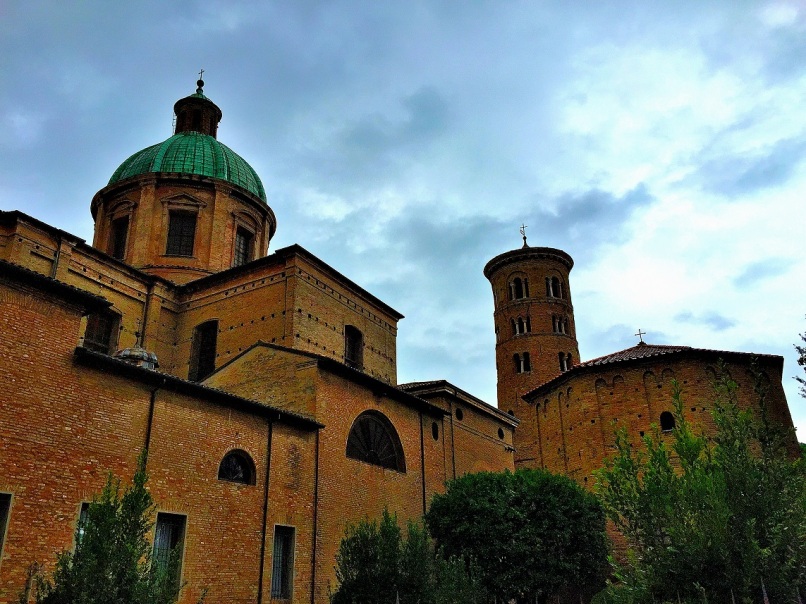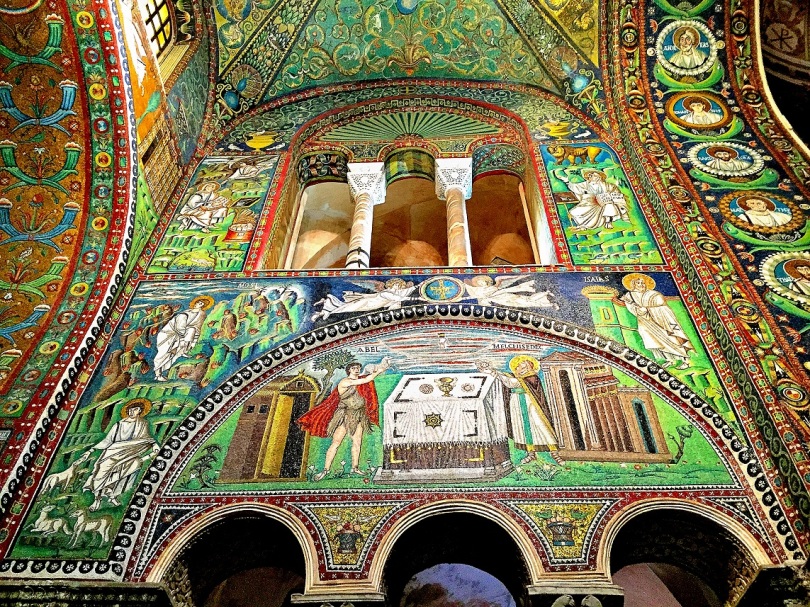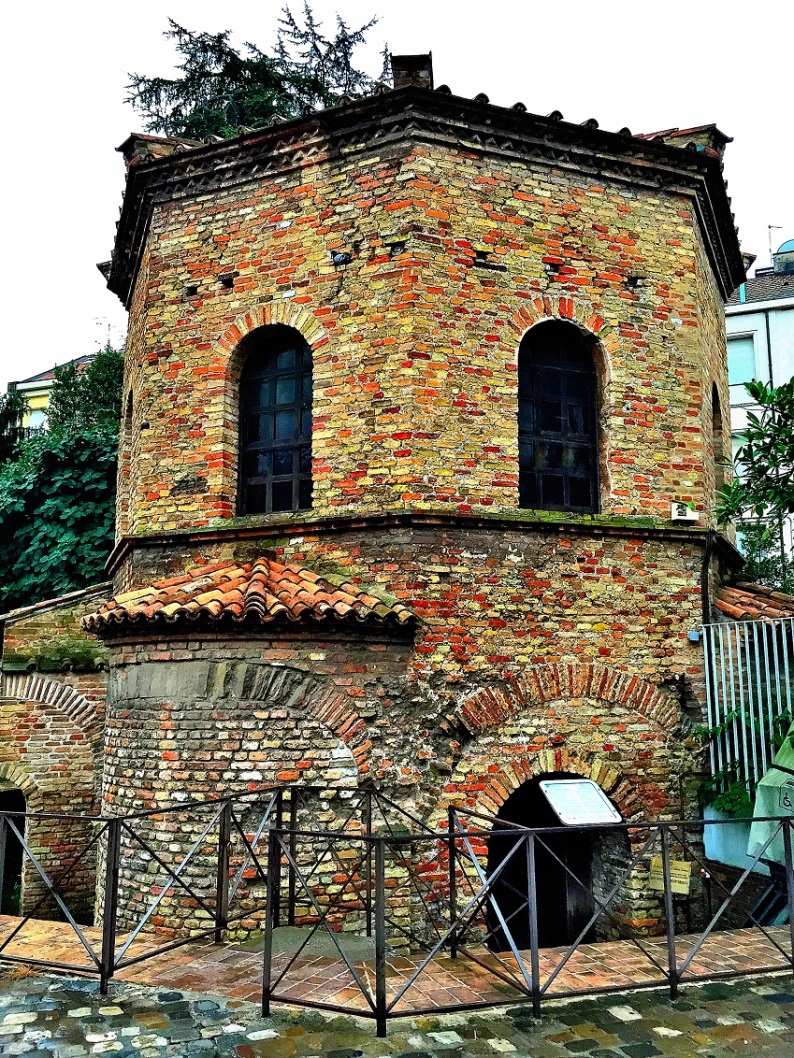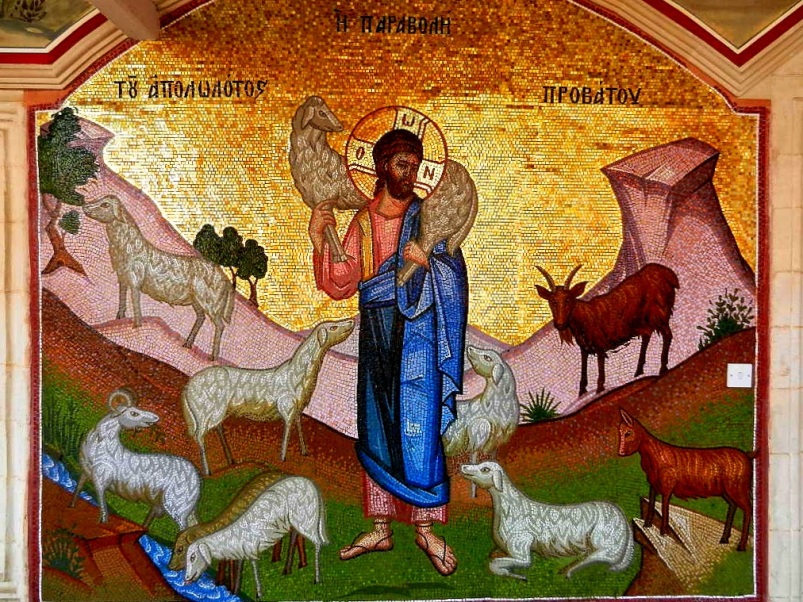My journey to learn the secrets of mosaics began while I was working in Los Angeles in 1990. At the time, a contemporary revival of mosaic art was taking place in LA due to its creative vibe, great number of artists and the dry Mediterranean climate which is perfect for the preservation of outdoor mosaics.
I began creating my own mosaic works as I delved more deeply into the materials and techniques used in producing traditional mosaics, an art form that stretches back to ancient Greece and Rome. Like any poor artist, I collected materials wherever I could afford–asking inside retail tile stores and dumpster-diving near design centers. Having always had an affinity for the beauty, luster and durability of tile, I fell in love with this medium as a means of creative expression.

Byzantine mosaic artists built upon the mosaic traditions of ancient Greece and Rome. Two gladiators (c. 1st century CE) are depicted in this mosaic from the Roman archaeological site of Kourion on the island of Cyprus. Photo: Henry Lewis
At the same time, I set about planning a 1993 art and architecture tour around Europe. Along with two close friends, we gawked with delight at awe-inspiring art which ranged from Antoni Gaudí’s early 20th century mosaic fantasy of Güell Park in Barcelona, to the large, meticulously rendered mosaics inside St. Peter’s Basilica in Vatican City.
There was a particular work inside St. Peter’s that had fooled me–when viewed from a distance–into thinking the mosaic was actually a large-scale Renaissance painting. This became my first opportunity to closely observe the subtly outlined forms and astonishing number of tile colors used by the mosaic artists of that period. Since St. Peter’s is an Italian Renaissance church, mosaic art had advanced into a more naturalistic style with an amazing array of tile shades in each color group, shades of color that weren’t available to artists during the earlier Byzantine period.

This colorful mosaic border found in the Arian Baptistry in Ravenna, Italy mimics the geometric patterns found in earlier Greek and Roman designs. Ravenna, which has a wealth of UNESCO-listed churches filled with dazzling mosaics, was the political center of the Western Byzantine Empire, also known as the Western Holy Roman Empire. Photo: Henry Lewis
While the Renaissance mosaics I saw that autumn in Rome were surely created at the artistic height of the art form, my fascination with Byzantine mosaics stems from their vast number and direct connection to the sprawling Empire that spawned them.

An early Byzantine period mosaic floor in Madaba, Jordan. Photo: Henry Lewis
A bit of historical background
Based on archaeological finds, the earliest mosaic art was produced for temples in the Fertile Crescent region of Mesopotamia during the 3rd millennium BC. These early designs were created from available materials–shells from the coast, rounded or worked stones and pieces of bone or ivory. This was the traditional foundation of mosaic production that would be turned into a fine art by the Greeks and Romans almost three-thousand years later.
The Byzantine Empire
In 330 CE, after the Roman Emperor’s conversion to Christianity, Constantine moved the seat of power from Rome to Constantinople, which he established as a second Rome on the site of the ancient city of Byzantium (present-day Istanbul). At it’s peak, the Byzantine Empire stretched from Spain in the west to Palestine in the east, and was divided into the Western and Eastern Empires. Ravenna, Italy was made the Western Empire’s seat of power, while Constantinople was the Eastern seat of power and main capital of the Empire until it fell to the Ottoman Turks in 1453 CE.
Constantine and later Emperors–particularly Justinian, who expanded the Byzantine Empire to its greatest extent–used the Empire’s wealth to develop churches and pubic buildings that made liberal use of mosaics and frescoes which presented various Biblical stories as well as perpetuating Imperial power. The scale and beauty of Byzantine architecture is on full display in buildings such as the Hagia Sophia (Church of the Holy Wisdom) in Istanbul and the Basilica of San Vitale in Ravenna.

The Hagia Sophia or Church of Holy Wisdom , completed in the 5th century CE, was converted into an Ottoman mosque in 1453 and remained so until 1931. It went through yet another incarnation and was converted into a museum in 1935. It was the largest Christian church in the world until it was replaced by the current record-holder, the Seville Cathedral. Photo: Henry Lewis

Layers of history, formed by the many renovations that have taken place over the centuries, are evident on the exterior facade of the Hagia Sophia. Photo: Henry Lewis

The Comnenus mosaic dates from the early 12th century CE and is found on a upper level of the Hagia Sophia. The mosaic depicts the Virgin Mary with the Child on her lap. Emperor John II Comnenus is on her right side and the Empress Saint Irene is to her left. The Emperor is holding a purse which signifies his financial generosity to the church while the Empress holds a scroll which signifies her contribution. Photo: Henry Lewis

The Empress Zoe mosaic, found in the same area of the Hagia Sophia as the The Comnenus mosaic, dates from the 11th century CE. Christ sits in the center flanked by Emperor Constantine IX Monomachus on his right and Empress Zoe on the left. As in the Comnenus mosaic, the royals are depicted holding their symbolic gifts to the church. Photo: Henry Lewis
During the Byzantine period, mosaic patterns were created using individual pieces of stone or glass known as tesserae or smalti, the latter often produced in Venice, Italy. The entire interior–ceilings, walls and floors–of Byzantine churches was often covered in Biblical scenes and other motifs meticulously created with these stone and glass tiles.
These mosaic scenes contained many symbolic elements and often included figures representing the Emperor and Empress, thereby granting them ‘holy’ status as they vied for wall space with the likes of Jesus Christ and the Virgin Mary.

The Basilica of San Vitale is an early 6th century CE Byzantine church located in Ravenna, Italy. Photo: Henry Lewis

The interior of the Basilica of San Vitale in Ravenna is a riot of color and varying mosaic motifs. Remember that these ornate scenes were created by affixing one tiny tile at a time. Photo: Henry Lewis

A series of mosaic Biblical scenes as depicted on the interior walls of the 6th century CE Basilica of San Vitale in Ravenna, Italy. Photo: Henry Lewis
Knowledge, skill and above all–patience
It feels overwhelming when I imagine the process involving months or years of labor in order to complete such great works of art. Producing such large-scale mosaics is an incredibly tedious endeavor and is physically demanding work as each tesserae or smalti is set in place one tiny piece at a time. While mosaic artists of this period would have undoubtedly had assistants, the dedication and patience involved is humbling to consider.

The exterior facade of the Arian Baptistry, constructed between the late 5th century and early 6th century CE in Ravenna, Italy. Photo: Henry Lewis

A mosaic of Christ being baptized by John the Baptist covers the interior dome of the Arian Baptistry in Ravenna, Italy. Photo: Henry Lewis
While those who are interested can find a critical mass of these dramatic works of art in cities such as Istanbul, Ravenna and Thessaloniki, Greece, Byzantine mosaics can also be found in many other regions that border the Mediterranean Sea.
Most contemporary mosaic art found in orthodox churches from Greece to Russia closely follows Byzantine styles and themes.

This contemporary mosaic, found at the Kykkos Monastery in Cyprus is based on a Byzantine design and theme. Photo: Henry Lewis
Final Words
Due to the late 20th century resurgence in the popularity of mosaics–especially those made from pieces of randomly broken tile–art lovers today can view these works on walls, counters and tables in restaurants and other public places from coast to coast in the USA and in many other parts of the world. However, these contemporary mosaics have much more in common with Gaudí’s whimiscal Barcelona creations than with the highly structured styles adhered to in ancient Byzantine works of art.
peace~henry



I love mosaics as well and the ones you have posted are pure art 😍
LikeLiked by 2 people
Thanks Flavia. The credit goes to the artists who created these amazing works of art!
LikeLike
But also to the photographer who has been able to appreciate these works value
LikeLiked by 1 person
Thanks for sharing your thoughts! They’re quite abundant in the Mediterranean region.
LikeLike
Beautiful mosaic artwork, breathtaking. I have done a ping back of this at House of Heart. I hope it is ok.
LikeLiked by 1 person
Thanks so much Holly!
LikeLiked by 1 person
It’s my pleasure Henry, a beautiful selection of mosaic art!
LikeLiked by 1 person
Very beautiful.
LikeLiked by 1 person
I agree. For me, there’s a sort of magic associated with mosaics. Thanks for stopping by!
LikeLiked by 1 person
Welcome! Peace.🙂
LikeLiked by 1 person
A wondrous collection of beautiful mosaic artworks. 😍
LikeLiked by 1 person
Yes, they are marvelous. There are SO many more to share. I only chose a selected few that I felt best represented Byzantine style.
LikeLiked by 1 person
The colors in the one from Ravenna!
LikeLiked by 1 person
Hi Ellen,
The Basilica of San Vitale in Ravenna was filled with magic and a place I didn’t want to leave.
LikeLiked by 1 person
Yeah, I can understand that.
LikeLike
OMG! What a fabulous post! Thank you, Henry!
LikeLiked by 1 person
Thanks goes to the artists of the Byzantine period.
LikeLiked by 1 person
True, but w/o you, and others who promote history, the past might just be past…gone…
What period are we in, now?
Will anyone in the future care, when it seems many humans don’t?
LikeLiked by 1 person
Aw-shucks, thank you!
LikeLike
Beautiful and amazing. Although I’m not up-to-date with the latest developments, there have been concerns in recent years about the destruction of Byzantine history in Turkey and most notably in Istanbul (formerly Constantinople). Do you have any information on this, Henry?
LikeLiked by 2 people
Hi Robert,
I haven’t heard or read anything specifically about the destruction of Byzantine history in Istanbul, but as a huge, booming metropolis that’s developing quickly, I’m not surprised. All the sites I featured (plus many more that I didn’t) are UNESCO world heritage sites and have a degree of protection. Balancing preservation and needed development, such as housing for a swelling population, is often difficult, plus the money for renovation and maintenance of historic structures often isn’t a priority for municipalities. I’ll poke around a bit and see what I can find out.
LikeLiked by 1 person
Thanks!
LikeLiked by 1 person
Wow, these mosaics are incredible! I was amazed to see just how many mosaics adorned the interior of the Basilica of San Vitale – practically the whole inside of the church is covered in them!
LikeLiked by 1 person
Hi Josh,
Yes, almost every square inch of the interior of San Vitale is covered in mosaic art. I’m fascinated by tasks that are completed with fine precision and that ethic certainly is evident in Byzantine craftsmanship. I suppose mosaic art could be described as the perfect medium (or the worst nightmare) for perfectionists and OCD types.
LikeLiked by 1 person
Thank you for planning that 1993 trip for us. It was unforgettable. I wish I could’ve seen Ravenna with you too. The combo of architecture and mosaic is awesome, and your photos show it so well.
LikeLiked by 1 person
It was my pleasure! 🙂 Ravenna definitely has some architectural jewels.
LikeLike
Dazzling colours and beauty, examples, as you say, of patience and dedication, two qualities which in our fast age are not always appreciated. Thank you for putting it all together for us Henry.
LikeLiked by 1 person
Hi Marios,
Thanks for your enduring support of this blog. It is very much appreciated!
LikeLike
Great shots. I was fortunate enough to have Dr. Constance Head in my Roman and Byzantine history courses in college. She was consumed by Byzantine culture and history, and the beauty of this unique artwork makes it easy to understand why.
LikeLiked by 1 person
The Byzantine Empire was a fascinating period in history that often receives scant attention in history books. You were fortunate to have had a professor who was ‘consumed’ by the events, art and culture of this period. Thanks for commenting Mike!
LikeLike
I truly enjoyed this walk across history to see the mosaic creations that are with us today.
LikeLiked by 1 person
Thanks @Hyperion! It’s nice to be reminded occasionally that humans are capable of creating such beauty.
LikeLiked by 1 person
It is reassuring that we can be so artfully creative when we aren’t being naughty and getting into trouble.
LikeLiked by 1 person
Outstanding education. Thanks teacher!
LikeLiked by 1 person
Thank you for stopping by CJ!
LikeLike
These are some splendid photographs. Like you, I also love mosaics. I fell in love with them while living in Istanbul. The Hagia Sophia and Chora have wonderful examples. Have you been to Chora? Here is a link to my post about it http://thedepthofnow.com/2018/01/byzantine-mosaics-of-kariye-muzesi
LikeLiked by 1 person
Hi Martina,
Istanbul is truly one of the world’s most amazing cities. I’ve been there a couple of times, but my longest visit was back in 2010. You are so lucky to live there. Unfortunately, I haven’t experienced Chora, but if I ever make it back there it will be at the top of my to-see list. By the way, your photographs are lovely. Thanks for sharing the link!
LikeLiked by 1 person
Thank you Henry! Your photographs are also inspiring 😊
LikeLiked by 1 person